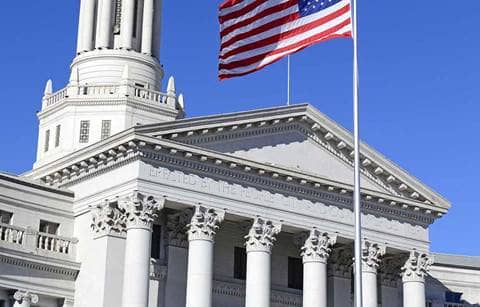Treatment of research and experimentation (R&E) expenses dramatically changed at the beginning of 2022 when a provision of the Tax Cuts and Jobs Act of 2017 (TCJA) took effect. Taxpayers are no longer allowed to deduct R&E expenses under Section 174 (Sec. 174 expenses), and instead must capitalize and amortize them. This already had an impact on first quarter estimated tax payments, but most taxpayers will need to make second quarter payments by June 15, and some taxpayers — particularly large corporate taxpayers and individuals that own pass-through entities — will need to account for changes to Sec. 174 in order to avoid underpayment penalties. Here, we explain what taxpayers should be thinking about as the next deadline for quarterly estimates approaches.
What happened?
Sec. 174 expenses include direct research expenses, such as wages and supplies, as well as certain indirect research expenses, including overhead and administrative costs incident to research activities. Historically, taxpayers had the option to deduct Section 174 expenses in the year they were incurred. However, due to the TCJA, taxpayers are no longer allowed to deduct these expenses, but rather must capitalize them over a period of five years for research conducted within the United States or 15 years for research conducted outside of the United States. You can learn more about the detailed direct and indirect impacts of this change in our webinar.
Is a fix for Section 174 on the horizon?
Throughout 2021, the proposed Build Back Better Act (BBBA) seemed to be a likely vehicle to defer the changes to Sec. 174, but the BBBA stalled at the end of 2021 and is unlikely to be revived. Currently, there is no active bill in Congress that addresses Sec. 174, and the headwinds of political, economic, and security issues make it unlikely that Congress will pass a significant tax package this year.
Nevertheless, Congress is currently developing a bill addressing global economic competition, and Congress members have discussed including a deferral of Section 174 capitalization in that bill. A conference to develop a draft bill formally began on April 28, 2022, and, although many Congress members have expressed strong support for including a Section 174 fix, others have voiced hesitation to include any tax-related changes. Despite bipartisan support to reverse the TCJA changes to Sec. 174, the economic competition bill faces significant hurdles, making it less likely that we will see any changes to Sec. 174 capitalization before the end of 2022.
Adapting to Section 174 changes
The requirement to capitalize Sec. 174 expenses impacts taxpayers’ quarterly estimated tax payments in 2022. Many taxpayers haven’t historically tracked Sec. 174 expenses and therefore don’t currently have a process to estimate the impact of Sec. 174 capitalization on 2022 estimates. Depending on the unique facts of a taxpayer’s business, capitalizing Sec. 174 expenses may significantly impact taxable income, which in turn impacts the amount taxpayers should remit in their quarterly estimated tax payments. Taxpayers should review their finance and accounting procedures for tracking and recording Sec. 174 expenses so they can accurately estimate the impact of the new capitalization requirement.
Businesses should also consider avenues to mitigate the impact of Sec. 174 expense capitalization and amortization. Some Sec. 174 expenses may qualify for research and development (R&D) tax credits under Sec. 41 or even state tax credits. Some taxpayers may even be able to amend previous tax returns to claim additional R&D tax credits. While not all Sec. 174 expenses are eligible for the R&D tax credit, taking full advantage of the credit can help mitigate the impact of Sec. 174 capitalization on a business’s tax liability.
Calculating quarterly tax estimated payments
For most taxpayers, second quarter estimates are due on June 15. As the deadline for Q2 estimated tax payments is approaching quickly, taxpayers must take action to avoid underpayment penalties. Corporations and individuals, including partners and S corporation shareholders, must remit quarterly estimated tax payments for 2022 if they expect to owe tax exceeding a specified threshold. Certain taxpayers can take advantage of a safe harbor that allows them to calculate their estimated payments based on their prior-year tax liability.
For individuals, each quarterly payment must capture one quarter of the lesser of:
- 90% of the tax owed for the current tax year.
- 100% of the tax owed in the previous tax year for individuals with an adjusted gross income (AGI) below $150,000 or $75,000 if married filing separately (increased to 110% when AGI exceeds those thresholds).
Corporations are only permitted to use a safe harbor based on their prior-year tax liability if they have not had taxable income exceeding $1 million in any of the three prior tax years. Corporations that exceed this threshold can only use this safe harbor for the first quarterly tax payment of the year, while all remaining estimates for the year must be based on the corporation’s actual current-year results.
Therefore, in order to avoid an underpayment penalty, large corporations and individuals not relying on a prior-year safe harbor must begin including the impact of Sec. 174 capitalization in their second quarter estimated tax payments. The IRS may impose an underpayment penalty for each quarter that taxpayers remit estimated tax payments that are less than the amount that should have been paid.
How we can help
Without any relief on the horizon, the requirement to capitalize and amortize Sec. 174 expenses is an unfortunate reality for taxpayers. Our experts can help you calculate accurate quarterly tax payments and identify ways to address the tax impact of the new Sec. 174 rules by:
- Modeling the impact of capitalizing and amortizing Sec. 174 expenses.
- Identifying qualifying Sec. 41 R&D tax credit expenses and modeling the impact of taking an R&D tax credit at the federal and/or state level.
- Identifying steps businesses should be taking now to implement changes to Sec. 174 capitalization.





